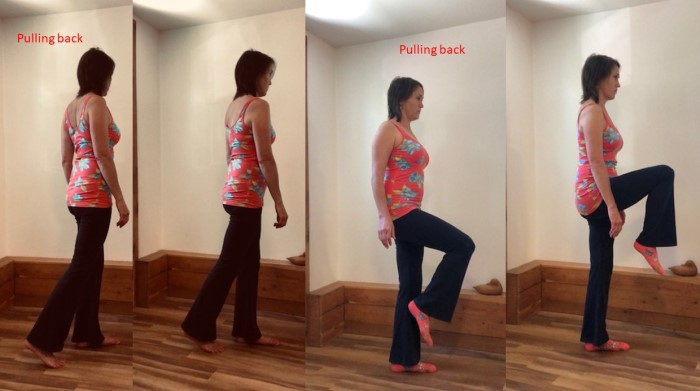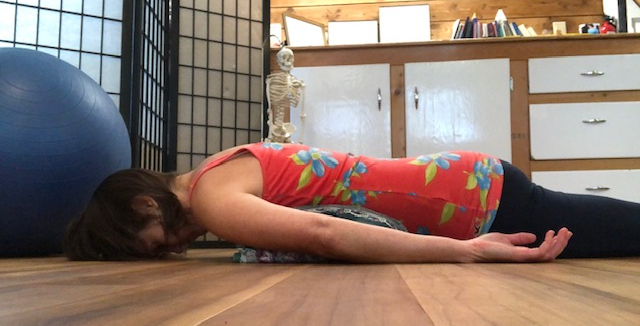
Have you ever been told, “Pull your shoulders back!” or “Roll your shoulders back and down”? Do you find yourself doing that when you noticed that your shoulders are slumped forward?
Well, I have some great news for you! Shoulders actually do round forward when they are neutral! What is happening most of the time in the case of shoulders being “too far forward” is a general collapse of the torso. Often when this happens, that little voice in our heads (mimicking a parent or a teacher) tells us to pull the shoulders back to resolve the “posture problem.” We also tend to associate neck and back discomfort with shoulders being forward.
Slumped shoulders are actually usually a symptom, not a cause of back and neck discomfort. The problems with pulling your shoulders back are 1) you have not resolved the torso collapse issue and 2) you have created new habitual tension that leads to more misalignment, more postural pain, restricted movement and balance problems.
What should you do instead?
1. Stop
Most of us believe that in order to fix something, we must do something. But we do those other things with the same habitual tension that created the original problem. Often (very often, in my experience!) the solution is to stop. Give yourself a moment to pause and notice your reactions. Notice when you have pulled your shoulders back and give yourself permission not to do it.
2. Think up
Try not to pull yourself up. If you do, you will probably notice that it’s not sustainable and that it creates more tension. Use whatever image helps you to direct your attention upward. This helps to develop appropriate muscle tone in your torso.
3. Allow movement
Allowing movement is different from forcing movement. Pulling shoulders back is forcing, and it involves forcing shoulder blades together. This reinforces habitual tightening of the back and bracing of the torso, which lead to a vicious cycle of back and neck pain, impaired balance and reduced ability to get air in and out. Shoulder blades love to move and arms love to swing. Let them! You will probably notice that your balance improves, too.
4. Prone rest
I have often recommended conscious rest lying face up with a head support and knees up. Today I would like to add prone (face-down) rest. Place a pillow under your chest, high enough to just allow your forehead to touch the floor. Rest your arms at your side palm up or flexed with palms down beside your head. Notice how your back and shoulders open.

Use these steps to create a positive cycle of allowing the body to open up instead of pulling in. Pulling in is a natural reaction to stress, but it is not a useful way of being long-term, because it perpetuates and worsens stress and pain. Stop to give yourself time to notice and let go. Think up to help yourself go up instead of pulling down. Allow your whole body to move, including shoulders and shoulder blades. Use prone rest to encourage your back open.
August classes (onine and in-person) include Balance, Mindful Movement, Elasticity at Any Age and Mindful Movement for Persistent Pain, as well as one-on-one coaching for reducing pain and stress, and improving balance and ease and freedom of movement. We’ll be putting the above ideas and more into practice!
Wishing you balance and freedom!
Mari
DiscoverEase in Movement
Print class schedule
Sign up for classes or a monthly DiscoverEase in Movement membership


Recent Comments